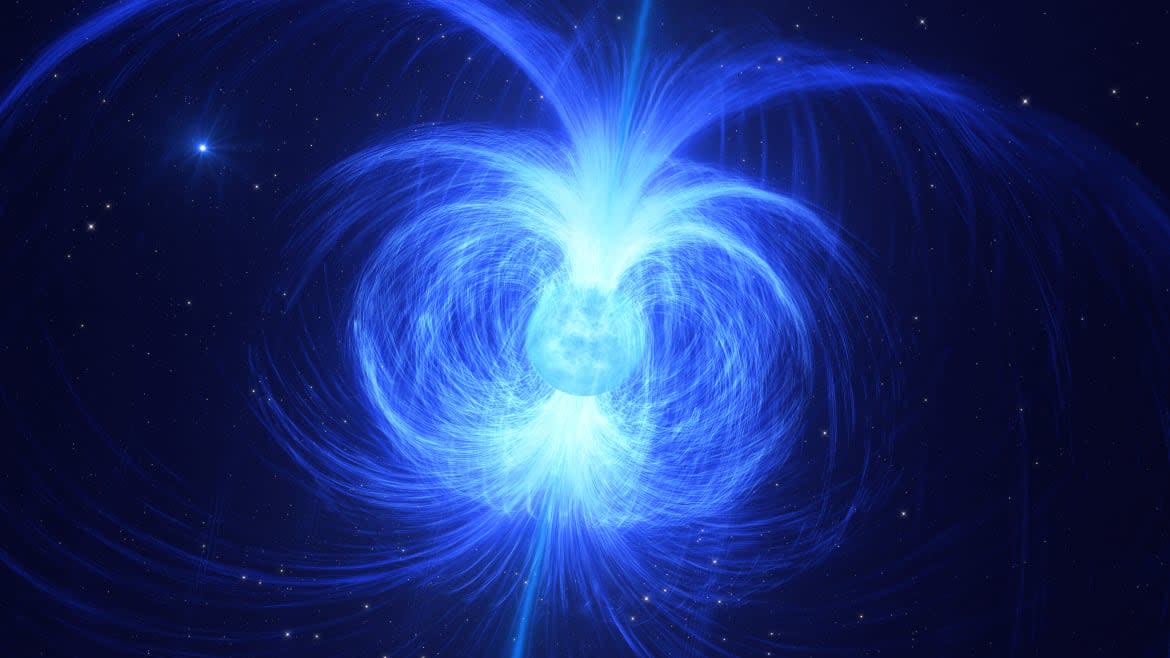This New ‘Zombie’ Star May Solve One of Space’s Biggest Mysteries

- Oops!Something went wrong.Please try again later.
It’s not every day scientists glimpse a new kind of star, but today is one of those days: Researchers with the European Southern Observatory (ESO) have announced the discovery of a new type of star that seems to be the missing link between a normal “living” star and a magnetar—super dense dead stars that exhibit ultra-powerful magnetic fields. The findings could help us to better understand the evolution of one of the strangest astrophysical phenomena in the entire universe.
The findings were published Thursday in the journal Science.
“This star became a bit of an obsession of mine,” Tomer Shenar, the lead author of the study and an astronomer at the University of Amsterdam, said in a statement. Shenar and his colleagues have affectionately referred to the star in question, HD 45166, as a “zombie star” due to its transient existence between life and death.
NASA’s James Webb Space Telescope Spots a Jamboree of Stars Hiding in a Nebula
HD 45166, located 3,000 light years away, is by no means a new star on the radar of astronomers. In fact, scientists have been studying it for more than 100 years. But it’s only now that we have learned that it will likely turn into a magnetar someday. That means it can help fill the knowledge gaps for explaining how celestial objects sometimes transform into magnetars after death.
“I remember having a eureka moment while reading the literature: ‘What if the star is magnetic?’,” said Shenar.
The research team used observations of the star taken by several different facilities around the planet—mainly from the Canada-France-Hawaii Telescope and from archival collected by the Fiber-fed Extended Range Optical Spectrograph (FEROS) at ESO’s La Silla Observatory in Chile. Those two sets of data provided some much-needed information on the strength of the magnetic fields being produced by HD 45166.
Astronomers See a Star Eating a Planet for the First Time
As a result, the team had a definite conclusion to draw: the star was magnetic. Incredibly magnetic. In fact, it’s the most magnetic massive star on record—despite the fact that it’s still technically alive.
Of course, magnetars are even more magnetic, boasting magnetic fields at least a billion times stronger than what HD 45166 can produce. However, the findings suggest that at the end of its life, this star’s next evolution will be to continue on as a magnetar.
It’s doubtful HD 45166 is the only star of its kind to be on this kind of pathway. Shenar and his team are eager to see if they can find others like it and learn more about all the twists and turns stellar evolution takes in places near and far away.
Get the Daily Beast's biggest scoops and scandals delivered right to your inbox. Sign up now.
Stay informed and gain unlimited access to the Daily Beast's unmatched reporting. Subscribe now.

